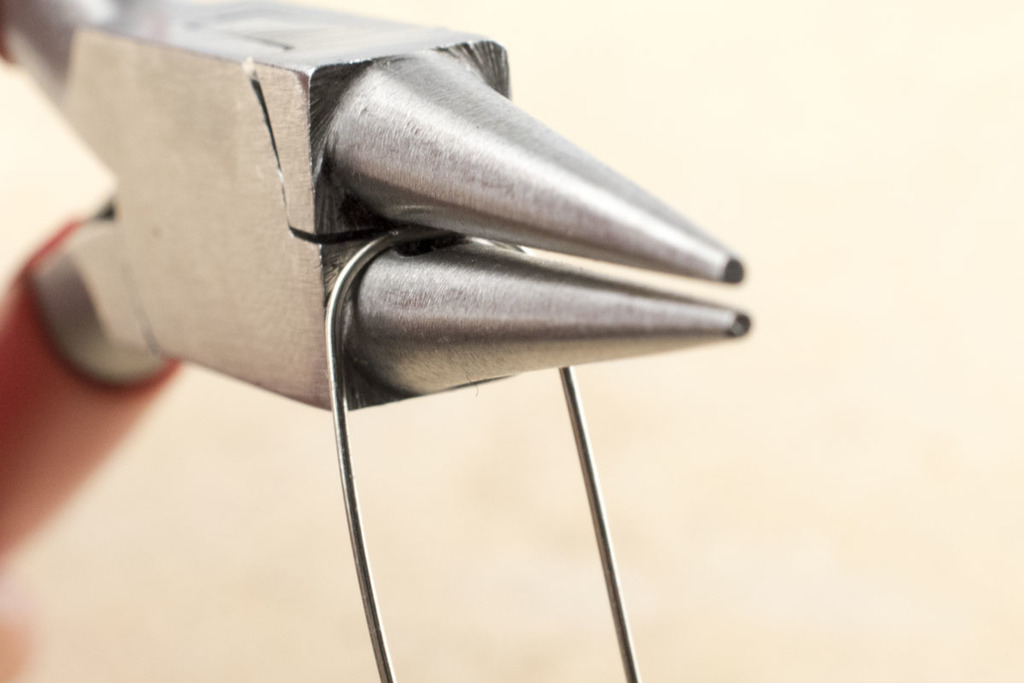
Step 1
Measure the wire needed based on the size of the bead you are to use, typically 1 1/2 inch to 2 inches is sufficient. Double this measurement for this exercise and cut.

Step 2
First establish the size of the loop you would need and mark it on the prong of the round nose plier. Remember the farther "in" the wire is on the pliers the wider the loop, the further out the wire, the smaller the loop.

Make sure that there is enough wire to use, base this length on the beads and the loop size. There will be a short side and a long side based on measurements. The short side of the wire is for wire wrapping and the long side of the wire will be reserved for beading.

Step 3
From the established size of your loop, wrap the wire around one of the prong of the round nose plier, create an "L-Shape" by putting the short side wire across, parallel to the work table, and the longer wire lengthwise.

Step 4
Hold the wire firmly with the round nose plier, make sure it is on the marker of your loop size. Wrap the wire around the longer wire, for this exercise we will be doing 3 wraps, the wraps should be based on the size of the beading hole and the height of the bead.

Step 5
At the end of the first set of your wire wrap, start bringing the shorter wire back towards the loop. To do so, create an initial pressure towards the loop when doing the wire wrapping. This pressure would move the direction of the wire wrap, from there the wire will naturally move and you will only need to follow.

When starting to double wire wrap, looking at the bottom is often an easy way to see if the wire is doing the correct way. Controlling the direction is simply done by applying gentle pressure towards the direction you want the wire to go to.

Step 6
Stop wire wrapping at the bottom of the wire loop, cut closely against the wire wraps you have created so that it blends with the rest of the wire wraps.

At the end of the cut wire stub, use the bent flat nose pliers to gently even out the cut on the stub.

Step 7
Double wire wraps is a trade secret, the better you are at them, the less you would depend on gluing wire on beads. Have you used double wire wrapping before? If so, we would like to share them with everyone.
Conclusion
The double wire wrap can be very helpful when dealing with beading holes that are too large. This technique solves that problem when working with wire.

